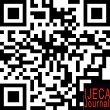Effects of Corrective Feedback on Students’ Linguistic Errors
Abstract
Keywords
Full Text:
Download [PDF]References
Arikunto. (2010). Metodelogi Penelitian. Pendekatan Penelitian, 61–84.
Bitchener, J. (2008). Evidence in support of written corrective feedback. Journal of Second Language Writing, 17(2), 102–118. https://doi.org/10.1016/j.jslw.2007.11.004
Bitchener, J., & Ferris, D. R. (2012). Book Reviews. RELC Journal, 44(1), 121–124. https://doi.org/10.1177/0033688212473292
Bitchener, J., & Knoch, U. (2009). The relative effectiveness of different types of direct written corrective feedback. System, 37(2), 322–329. https://doi.org/10.1016/j.system.2008.12.006
Bitchener, J., & Knoch, U. (2010). Raising the linguistic accuracy level of advanced L2 writers with written corrective feedback. Journal of Second Language Writing, 19(4), 207–217. https://doi.org/10.1016/j.jslw.2010.10.002
Boggs, J. A. (2018). Book review. System, 72, 251–253. https://doi.org/10.1016/j.system.2017.12.014
Evans, N. W., James Hartshorn, K., & Strong-Krause, D. (2011). The efficacy of dynamic written corrective feedback for university-matriculated ESL learners. System, 39(2), 229–239. https://doi.org/10.1016/j.system.2011.04.012
Henning, G. (1990). Writing English language test. Heaton, J. B. London and New York: Longman, 1988, 192 pp., £6.50 (Longman Handbooks for Language Teachers). In System (Vol. 18, Issue 1, pp. 114–115). https://doi.org/10.1016/0346-251X(90)90037-6
Politzer, R. L., & Ramirez, A. G. (1981). Linguistic and communicative competence of students in a spanish/english bilingual high school program. NABE Journal, 5(3), 81–104. https://doi.org/10.1080/08855072.1981.10668411
Zhan, L. (2016). Written Teacher Feedback: Student Perceptions, Teacher Perceptions, and Actual Teacher Performance. English Language Teaching, 9(8), 73. https://doi.org/10.5539/elt.v9n8p73
DOI: https://doi.org/10.31764/ijeca.v1i2.2147
Refbacks
- There are currently no refbacks.
Copyright (c) 2018 IJECA (International Journal of Education and Curriculum Application)

This work is licensed under a Creative Commons Attribution-ShareAlike 4.0 International License.
IJECA (International Journal of Education and Curriculum Application) already indexed:










___________________________________________________________________
| |
____________________________________________________________________
IJECA Publisher Office:







.jpg)




